Hi Paula, thank you for being here today. To start, it’s always fascinating to understand the path that brings experts like you into such specific fields. Could you share a bit about your academic and professional background? Was there a particular moment or experience that sparked your interest in smart grid research?
Thank you for the opportunity, Matteo. I began my journey as an electrical engineer here in Ireland, driven by my love for math. At the time, I didn’t know much about engineering or even higher education, but I was drawn to the problem-solving aspect of the field. I worked in the utility sector during the 1980s, back when the industry was dominated by a single monopoly. That gave me a deep understanding of electricity networks and their challenges.
After taking a career break to raise my children, I faced difficulties re-entering engineering, so I transitioned into computer science, which eventually led me to operations research. This shift felt natural, as operations research combines mathematical modeling with practical applications—exactly the type of work I enjoy. Over time, my background in electrical engineering reconnected me with challenges in the energy sector, particularly around the clean energy transition.
The need for sustainable solutions has grown increasingly urgent, and it’s an area full of both opportunities and complexities. For example, understanding how to meet ambitious sustainability goals while ensuring practical feasibility is a challenge that requires interdisciplinary expertise. That’s what keeps me motivated in my research today.
Your background is so rich and diverse—it’s clear how much expertise you bring to this field. Speaking of sharing knowledge, you recently attended the International Summer Conference in Valencia. How was your experience there, and what stood out most for you?
The Valencia conference was a fantastic experience. One of my collaborators recommended it, and I was immediately drawn to the event because of its focus on bridging academia and industry. I submitted a paper in collaboration with colleagues from Ireland and across Europe, and I was excited to present our findings to such a diverse audience.
What I found particularly valuable was the opportunity to hear from industry professionals about their perspectives on emerging technologies like AI and large language models. As someone rooted in academia, it was eye-opening to see how these innovations are being interpreted and applied in practice.
Moreover, the conference emphasized interdisciplinarity, bringing together experts from various fields within decision science. That’s what made it so enriching—it wasn’t just about sharing my own work, but also learning from others and finding potential avenues for collaboration.
That blend of academia and industry seems to align perfectly with your own work. Let’s talk about the research paper you presented at the conference. Could you give us an overview of the key issues it addresses?
Absolutely. The paper delves into one of the critical challenges of the clean energy transition: understanding how residential electricity users adopt low-carbon technologies like electric vehicles (EVs), heat pumps, and photovoltaic (PV) panels. These technologies not only influence individual electricity consumption but also have broader implications for grid stability and capacity planning.
To explore this, we utilized data from a trial conducted by the utility regulator in Ireland. The dataset, though a bit dated, provided insights into consumer behavior using smart meters. From this data, we developed reference load profiles, which are essentially baseline patterns of electricity usage. These profiles are crucial for identifying how demand fluctuates and planning necessary upgrades to the low-voltage distribution network.
Our findings highlight the need to prepare for a future where these technologies are widespread. For example, as more households adopt EVs or heat pumps, peak electricity demand will change significantly. Anticipating these shifts is vital to ensuring the grid can handle new pressures without compromising service reliability.
That’s fascinating. It seems like understanding these patterns is essential for managing the transition to cleaner energy systems. Specifically, how do smart grids help in making electricity management more reliable and efficient?
Smart grids play a transformative role in modernizing electricity systems. Let me give you an example. When EV owners return home in the evening, they often plug in their cars to charge, coinciding with other peak activities like cooking and heating. This simultaneous demand creates a spike in electricity usage, which can strain the grid significantly.
Smart grids address this by enabling demand-side management. For instance, users can plug in their EVs, but the charging process might be delayed until off-peak hours, such as late at night. This not only stabilizes the grid but also ensures a more efficient use of resources.
The same concept applies to other technologies, like heat pumps. With the right infrastructure, smart grids can schedule energy consumption based on demand patterns, ensuring that homes remain comfortable while avoiding unnecessary stress on the grid. Essentially, these systems automate decisions that would otherwise be overwhelming for individual users, making energy management seamless and effective.
This transition to smarter systems really does represent a major shift from traditional grids. If we focus on Europe, how do smart grids compare to conventional systems in adapting to changing electricity demands?
Traditional grids were designed with a one-way flow of electricity, from centralized power plants to consumers. In contrast, smart grids support decentralized energy production, where electricity can flow in multiple directions.
Take PV panels, for example. A household with solar panels might generate excess electricity during the day. With a traditional grid, this energy would go unused. But in a smart grid, it can be fed back into the system or stored in batteries for later use. Additionally, smart grids enable services like frequency regulation and demand response, which are essential for maintaining grid stability as renewable energy sources become more prevalent.
This flexibility is a game-changer, especially as we move toward a more sustainable energy future. It empowers communities and individuals to actively participate in energy markets, whether by selling electricity or providing grid services.
Let’s talk about the practical applications of your work. How do you see your research influencing energy providers and policymakers?
One of the challenges we face as researchers is ensuring our insights reach the right stakeholders. For example, in Ireland, we have a relatively small network of energy providers and regulators, which makes it easier to connect with decision-makers. However, translating academic findings into actionable policies remains a complex task.
Our work on reference load profiles provides a foundation for designing better pricing strategies and infrastructure upgrades. For example, utility providers can use these profiles to create time-of-use tariffs that incentivize consumers to shift their energy usage to off-peak hours. Similarly, policymakers can rely on our findings to prioritize investments in grid modernization.
At the Valencia conference, I appreciated the opportunity to engage with a broader audience, including industry professionals and policymakers. Events like this are crucial for bridging the gap between research and real-world application.
We’ve discussed a lot of the immediate implications of your work, but I’d love to hear your thoughts on the bigger picture. How can decision science help address global environmental challenges in the coming years?
Decision science has immense potential to drive sustainable change, but it requires collaboration across disciplines and sectors. At its core, decision science provides the tools to model complex systems, optimize solutions, and generate actionable insights.
Looking ahead, I believe the focus should be on community-level initiatives. For example, at University College Dublin, we have a Sustainable Energy Community group that promotes knowledge sharing and collective action. These initiatives can address challenges like energy poverty while building trust in new technologies.
Moreover, decision science must prioritize accessibility. It’s not enough to create sophisticated algorithms; we need to ensure they are understandable and usable for the end-users—whether they are policymakers, energy providers, or individual consumers. By connecting insights to tangible benefits, such as cost savings or reduced carbon footprints, we can encourage broader adoption of sustainable practices.
Paula, this has been such a valuable conversation. Thank you for sharing your insights. We’re looking forward to seeing your continued contributions to the field—and hopefully welcoming you to another DSA conference in Italy next year!
Thank you, Matteo. It’s been a pleasure, and I’d love to attend the next conference. Connecting with the community is always inspiring.

